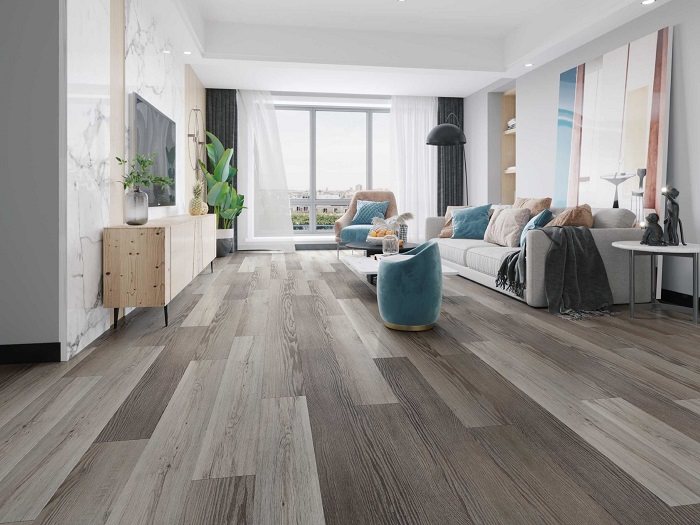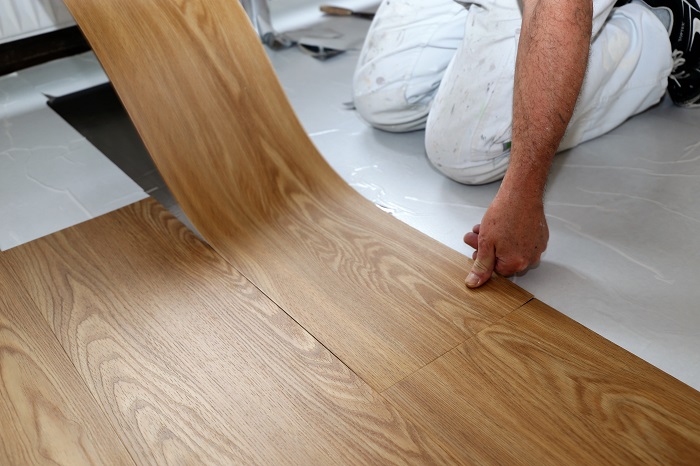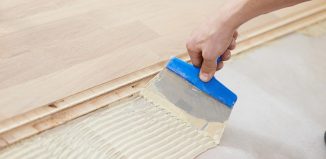There is nothing like coming home to a place that exudes warmth, comfort, and a relaxing atmosphere. Your home is one of the essential spaces in your life. It’s where you spend your time with family, friends, and pets. You want to make it as comfy as possible so you can enjoy all these moments, but at the same time, it needs to fit your taste!
A comfy home doesn’t need to be expensive or difficult to make your own; it just needs a little bit of love and creativity. You know that home improvement is a big deal, but what kind of home improvement project should you do? There are so many options, and it can be hard to decide on just one. If you want your home to look spectacular with an eye for detail, flooring LVT might be the way to go.
With vinyl flooring, such as LVT, you can elevate your home with incredibly designed floors that tie the whole room together. Are you still new to the trend of LVT vinyl floors? If so, let’s go over what precisely this home improvement means and how it compares to the traditional flooring practices we’ve been using.
What is LVT Flooring?

As one of the most popular choices for homeowners looking to update their homes, flooring lvt also known as luxury vinyl tile flooring is a type of resilient flooring that has been around since the 1970s. Still, with technological advancement, it has seen increased popularity over recent years.
It’s made of an acrylic coating, which is adhered to the face of PVC boards that are then laminated with polyester film. It offers many features and benefits over other types of flooring, including durability, low maintenance requirements, waterproof properties, and sustainable design elements.
This type of flooring lvt is often used as an alternative to hardwoods or other natural materials because they it can be installed over many types of surfaces, including concrete slabs, without any additional assistance from heating or cooling systems. There are several types of luxury vinyl tile floors that vary in appearance and installation process based on what you want out of your tiles.
Another great thing about this type is that all layers are made from recycled materials, thus making it an environmentally friendly alternative. Whether you’re looking for a permanent change or a temporary improvement to a room in your house, vinyl LVT offers you the feel of natural wood, marble, or terrazzo design.
It can be installed almost anywhere in your home and requires little maintenance because it doesn’t have any joints or seams. Another benefit is that it also reduces noise levels because it’s soft underfoot, so you can walk around freely without worrying about waking up roommates or disturbing the neighbours downstairs!
Depending on where you want to install the lvt vinyl flooring, the market offers a few main types of flooring, and within them, you will find an extensive selection of designs to match the rooms’ aesthetic. You can choose from:
- Loose-lay vinyl tiles are easy-to-remove tiles that adhere to the ground due to the extreme grip on the bottom layer. Despite their easily removable nature, these floors offer the same durability levels as any other design and are a great option if you want to change your aesthetics often. Loose-lay vinyl floors are a relatively new addition to the LVT family, yet they have taken the trend by storm and have become a favourite to many.
- Glue-down lvt flooring is a more professional-style type and requires an expert to lay it down. The special vinyl glue is layered on the selected area, and then the pieces of vinyl are carefully placed on top of it. Glue-down LVT is an excellent option for high-traffic areas as the materials are sturdier, and the installation process guarantees the vinyl stays in place no matter what. The downside is that these floors are tough to remove, so consider if you’re ready for the commitment when you install them.
- Interlocking LVT has a puzzle-like design with planks that have edges with tongues and grooves that interlock together in place, as the name suggests. Interlocking tiles share a similar design as parquet and laminate floors. These flooring options are highly durable, but the removal process is somewhat of a hassle as you would need to remove the whole row in order to change one tile.
- Self-adherent LVT comes with an adhesive bottom layer and is one of the most straightforward installation designs. As one of the most popular options, this type offers the widest selection of styles. From rustic wood to sleek marble, you will find one to fit any room in the house. Self-adherent tiles require no additional tools for instalment and can be easily removed and changed with any heat tool.
How to Install LVT Floors

Installing practical flooring lvt is a great way to add value and style to your home. You’ve picked your favourite design, figured out where to put it, but now the installing is due, and maybe you’re feeling overwhelmed. Where to start, did you measure it right, and how do you glue it down? Don’t stress! With the guide below, you can learn the easiest steps to follow for a successful instalment.
First, you need to clear out the area from any furniture and check for unevenness that can obstruct the flooring from lying flat. After that, measure the space where you will be installing the flooring. This is important so that you know what size you need to cut your tiles without ruining the whole sheet. Keep in mind to leave out a few additional millimetres if you miscalculated in the initial measurement.
Depending on the type of tiles you’re using, whether they are self-adhesive or require vinyl glue, prepare the area correctly for tiling. This means adjusting the temperature before installation, cleaning the room, and laying glue if needed. Once the site is prepped, carefully start laying the flooring starting from the corner opposite the doors. This way, you won’t get trapped in a corner with no way of exiting the room. At the end of the process, inspect areas of the flooring for any lifting and let the tiles set overnight.












